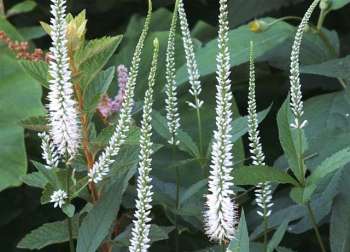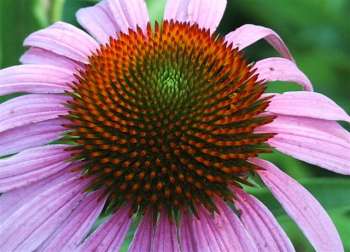- By Dan Segal
- Around Town
 Print
Print  OK, let's just forget about the deer for a minute...in the grand scheme of things, what does it mean to garden here? What's the habitat and where do we fit in the big picture of North America and the world?
OK, let's just forget about the deer for a minute...in the grand scheme of things, what does it mean to garden here? What's the habitat and where do we fit in the big picture of North America and the world?Gardening here, as you know, means late springs, hot and humid summers, autumns with cool nights where the frost can come early or hold off a bit longer than, say, in northern Minnesota, and winters that offer the worst of both worlds for plants--cold but not necessarily a lot of snow cover.

How does that compare to other extreme climate areas for gardening? Regions experiencing the same winter cold as ours may not experience the same summer conditions of heat and humidity (think of the mountain west). So plants of the mountain west, while some are great and adapt easily to the northeast, may be susceptible to mildew and fungal problems here in the humid northeast. Places with hot humid summers don't often suffer the cold winters we do (think of the southeast and the dank summer weather that comes to mind). So although some southeastern plants seem to do fine here, many won't be winter hardy even if they can take the hot, humid summers. And more locally, plants just a few miles away in the snow belt may get a lot more snow. A deep snow layer can insulate plants to such an extent that their ambient temperature under a foot of snow may be 25 degrees while winter winds whip a dry Cayuga Lake Basin garden at 30 degrees colder. So keep in mind some plants may do better in the snow belt despite what appears to be a harsher winter there. Snow is very good for plants in the north and in large measure what keeps them alive.
So it's hard to think of a climate offering wider extremes than ours throughout the year, considering July vs. January. And it's the net effect of those extremes that dictate which plants grow here naturally (our native flora) and which emigrates may grow well here if we introduce them. So when choosing plants for this environment, what can we do?

One of my favorite groups for northeastern horticulture, especially here in the Finger Lakes, are the prairie plants--many are pre-adapted to our environment. Some ecologists consider our hilltop and bluff terrain in the Finger Lakes Region to be either vestiges of prairie plant communities, or a close analog to prairie. It's very easy to imagine most of the unforested areas of the Finger Lakes region as having been meadow and prairie complexes until very recently. The prairie is a harsh and beautiful place, with biting winter winds and summer temps regularly approaching 100 degrees. Summer storms release great charges of humidity, and grazing pressures are high. Many horticulturally worthy plants from the prairie grow beautifully here--Bapitisa, Veronicastrum, Rudbeckia, Asclepias, Agasgtache, Monarda, to name a few. These are all examples of genera whose species are widespread in North America (and some beyond), and who typically thrive in a suite of environmental conditions that can be collectively considered 'extreme seasonality'.
Paying attention to the real spatial patterns of native plants (and all plants are native to somewhere) is a great way to grow your understanding of horticulture, and to learn more about which plants are truly suited for our environment. It's also a fun way to enrich your knowledge of plants in the real world, where they actually live. Your garden, and your life, become plugged into real populations of plants that live where you do. You are literally connecting firmly with nature as you become more intimate with plants around you, in your own habitat.

If you're interested in learning more about natural plant distributions, and why plant species are scattered and spread out as they are, stop by the nursery and strike up a conversation. It's one of my favorite botanical pursuits, and I'd love to hear which plants you know locally.
Dan Segal ownsand operates the Plantsmen Nursery . Contact Dan with suggestions for future articles at This email address is being protected from spambots. You need JavaScript enabled to view it. This email address is being protected from spam bots, you need Javascript enabled to view it .
----
v2i22



